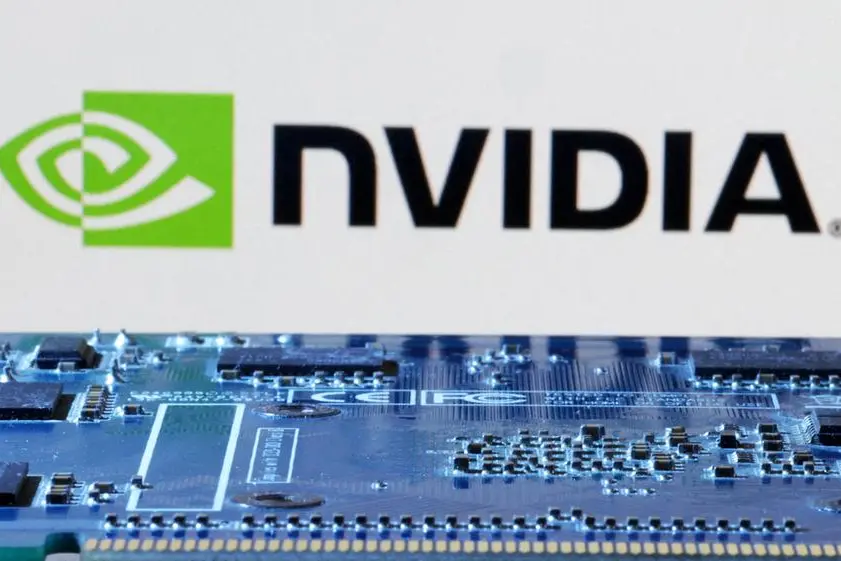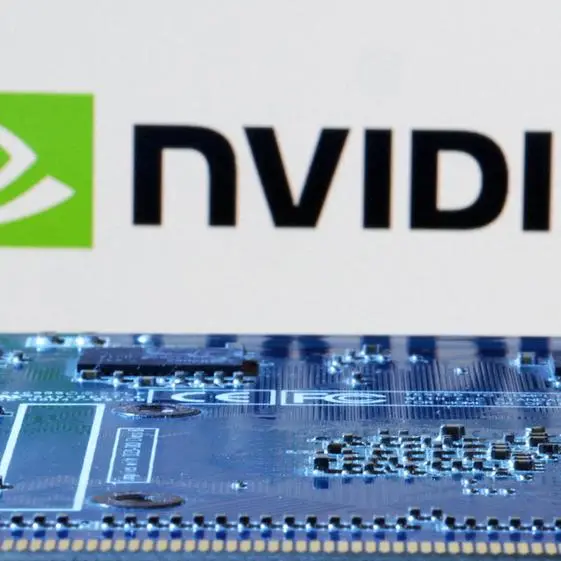PHOTO
Nvidia is set to post a more than three-fold surge in its fourth-quarter revenue on Wednesday, the same as in the previous quarter, as demand for its chips that dominate the market for artificial intelligence outstrips supply.
But even that remarkable growth may disappoint some investors who have become accustomed to Nvidia blasting past analyst expectations, which has led to a bull run in its stock since the beginning of 2023.
Nvidia recently left Amazon.com behind to become the fourth most valuable U.S. company, and is now head-to-head with Alphabet for the No. 3 spot. The chip designer's shares had gained nearly 50% this year, up to their last close.
However, Nvidia's shares fell more than 5% on Tuesday, as concerns surrounding the AI poster child living up to Wall Street's towering expectations sparked a selloff.
If the losses hold, it could be the biggest percentage drop in more than eight months for Nvidia.
That rally could ease if Nvidia warns again that U.S. curbs on selling its chips to China are hurting its business and visibility into long-term prospects, and if it is unable to sort out supply shortages at its chip contractor TSMC.
In response to the newest round of U.S. export rules, Nvidia has come up with new products for the Chinese market, but there is a risk that those chips will also be banned like its first round of China market chips.
"There's an understanding that China is going to go its own way," said Angus Shillington, a portfolio manager at wealth manager VanEck, referring to the country's efforts to make its own chips. VanEck's Semiconductor ETF held more than $151 million worth of Nvidia stock as of Jan. 31.
China accounted for more than a fifth of Nvidia's revenue in the third quarter.
Ultimately though, red-hot demand for Nvidia's graphic processing units - which are powering an AI upgrade at massive datacenters around the world - could trump all concerns.
"Given the hot demand situation, Nvidia should comfortably be able to replace China demand with other governments as well as large enterprises," Tejas Dessai, an analyst at exchange traded fund (ETF) provider Global X told Reuters. Global X's Robotics & Artificial Intelligence ETF held roughly $500 million worth of Nvidia stock as of Feb. 13.
The Santa Clara, California-based company is also likely to forecast on Wednesday another 200% year-over-year increase in revenue for its first quarter ending April, according to LSEG data.
Morgan Stanley analysts said in a note they expect Nvidia to top that expectation by 25%, thanks to aggressive orders, and Goldman Sachs said it expects major supplier TSMC to increase chip packaging capacity through the first half of the year.
Demand for advanced packaging was very strong and TSMC couldn't offer enough capacity to support customers, a bottleneck that would continue into next year, the Taiwanese company said in January. It is planning to invest nearly $2.87 billion in a plant, as it looks to double its packaging capacity.
"The reason why (Nvidia) can't beat (estimates) by more is the capacity needs. That is what's holding them back. Otherwise there could have been a larger beat," said Inge Heydorn, a partner at investment firm G.P. Bullhound, which holds Nvidia shares.
Last May, Nvidia stunned investors by forecasting revenue for the May-July period nearly 54% above analysts' expectations, igniting a rally in AI-facing stocks. Since then, the company's forecasts have surprised analysts, but to a smaller degree.
VanEck's Shillington said he does not expect that magnitude of a surprise, and that Nvidia would be foolish to rely on China demand.
For the first three quarters of 2023, Nvidia had reported quarterly revenue that beat analysts' estimates by between 10% and 20%.
(Reporting by Arsheeya Bajwa in Bengaluru; Additional reporting by Stephen Nellis in San Francisco; Editing by Sayantani Ghosh)












